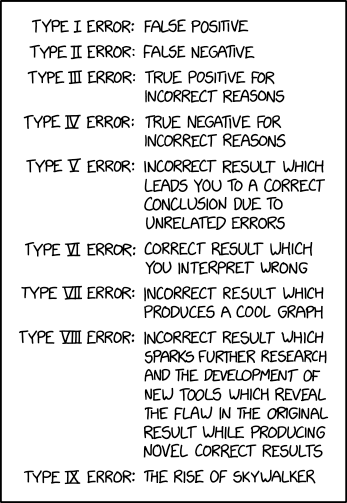
Source: https://xkcd.com/2303/
A brief explanation can be found at https://www.explainxkcd.com/wiki/index.php/2303:_Error_Types.
Explaining the "whys" of mathematics

Source: https://xkcd.com/2303/
A brief explanation can be found at https://www.explainxkcd.com/wiki/index.php/2303:_Error_Types.
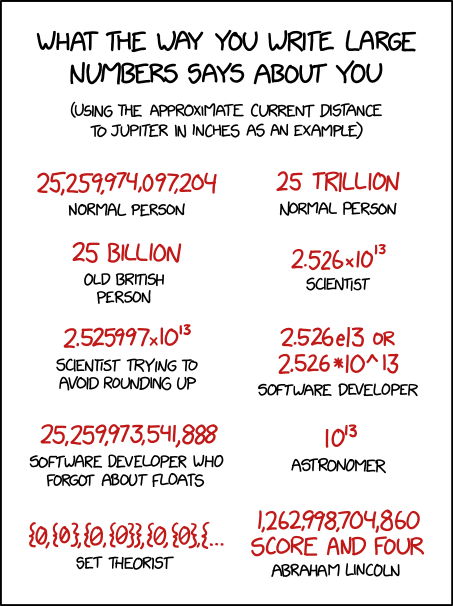
A great explanation of the comic can be found at https://www.explainxkcd.com/wiki/index.php/2319:_Large_Number_Formats.

Source: https://xkcd.com/2327/
While I’m easily amused by math humor, I rarely actually laugh out loud after reading a comic strip. That said, I laughed heartily after reading this one.

Source: https://xkcd.com/2283/
As I tell my calculus students, differentiation is a science. There are rules to follow, but if you follow them carefully, you can compute the derivative of anything. This leads to one of my favorite classroom activities. However, integration is as much art as science; for example, see my series on different techniques for computing
The contrast between differentiation and integration was more vividly illustrated in a recent xkcd webcomic:
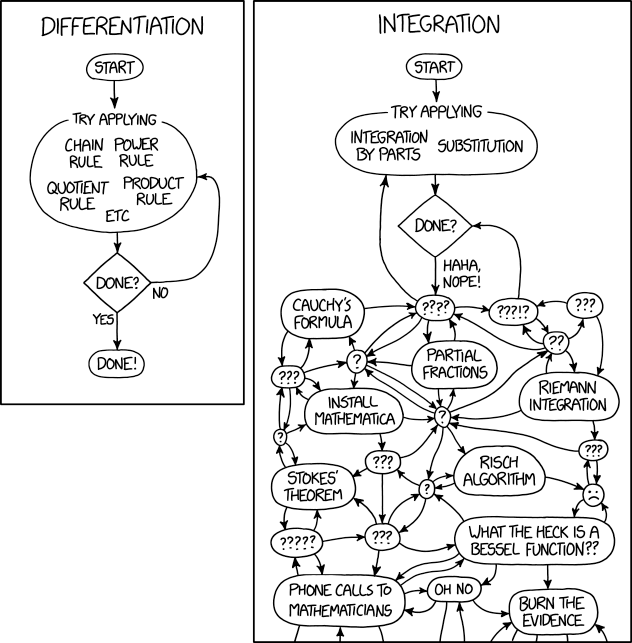
Source: https://xkcd.com/2117/
A pet peeve of mine is measuring things to far too many decimal places. For example, notice that the thickness of these trash bags is 0.0009 inches (0.9 mil) but is 22.8 microns in metric. There are two mistakes:

My favorite example that I’ve personally witnessed — that I wish I had a picture of — is measuring student’s perceptions of a professor’s teaching effectiveness is 13 decimal places.
This webcomic from xkcd illustrates the point both cleverly and perfectly.
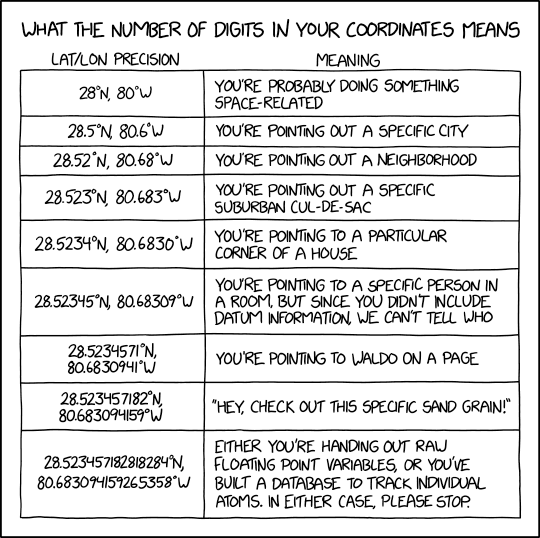
Source: https://xkcd.com/2170/
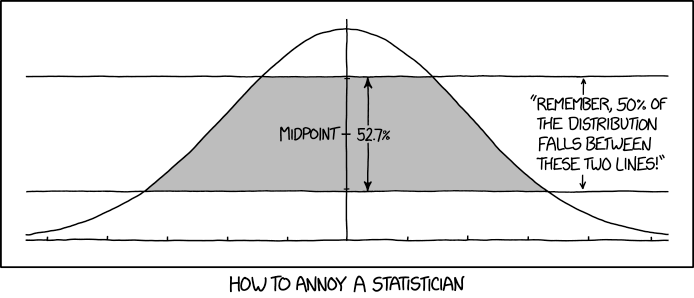
Source: https://www.xkcd.com/2118/
FiveThirtyEight.com interviewed Randall Munroe, the author of the wildly popular xkcd webcomic. I recommend the whole interview, but I thought that the follow few paragraphs were exceptionally insightful.
One thing that bothers me is large numbers presented without context. We’re always seeing things like, “This canal project will require 1.15 million tons of concrete.” It’s presented as if it should mean something to us, as if numbers are inherently informative. So we feel like if we don’t understand it, it’s our fault.
But I have only a vague idea of what one ton of concrete looks like. I have no idea what to think of a million tons. Is that a lot? It’s clearly supposed to sound like a lot, because it has the word “million” in it. But on the other hand, “The Adventures of Pluto Nash” made $7 million at the box office, and it was one of the biggest flops in movie history.
It can be more useful to look for context. Is concrete a surprisingly large share of the project’s budget? Is the project going to consume more concrete than the rest of the state combined? Will this project use up a large share of the world’s concrete? Or is this just easy, space-filling trivia? A good rule of thumb might be, “If I added a zero to this number, would the sentence containing it mean something different to me?” If the answer is “no,” maybe the number has no business being in the sentence in the first place.

Source: http://xkcd.com/1652/
I’m not a big fan of science fiction, but I know enough to know that Isaac Asimov was one of the great science fiction novelists of the 20th century. The following was written by him in the October 1980 issue of The Magazine of Fantasy and Science Fiction and was reprinted in his book Counting the Eons, which was published in 1983. (I’m now holding the battered and torn pages of my copy of this book; I devoured Asimov’s musings on mathematics and science when I was young.)
Robotics has become a sufficiently well development technology to warrant articles and books on its history and I have watched this in amazement, and in some disbelief, because I invented it.
No, not the technology, the word.
In October 1941, I wrote a robot story entitled “Runaround,” first published in the March 1942 issue of Astounding Science Fiction, in which I recited, for the first time, my Three Laws of Robotics. Here they are:
- A robot must not injure a human being or, through inaction, allow a human being to come to harm.
- A robot must obey the orders give it by human beings except where those orders would conflict with the First Law.
- A robot must protect its own existence, except where such protection would conflict with the First or Second Laws.
Clearly, the order in which the Three Laws of Robotics matters. Shuffling the order leads to possible permutations, and xkcd recently had some fun about what the consequences would be of those permutations.

Source: http://www.xkcd.com/1613/